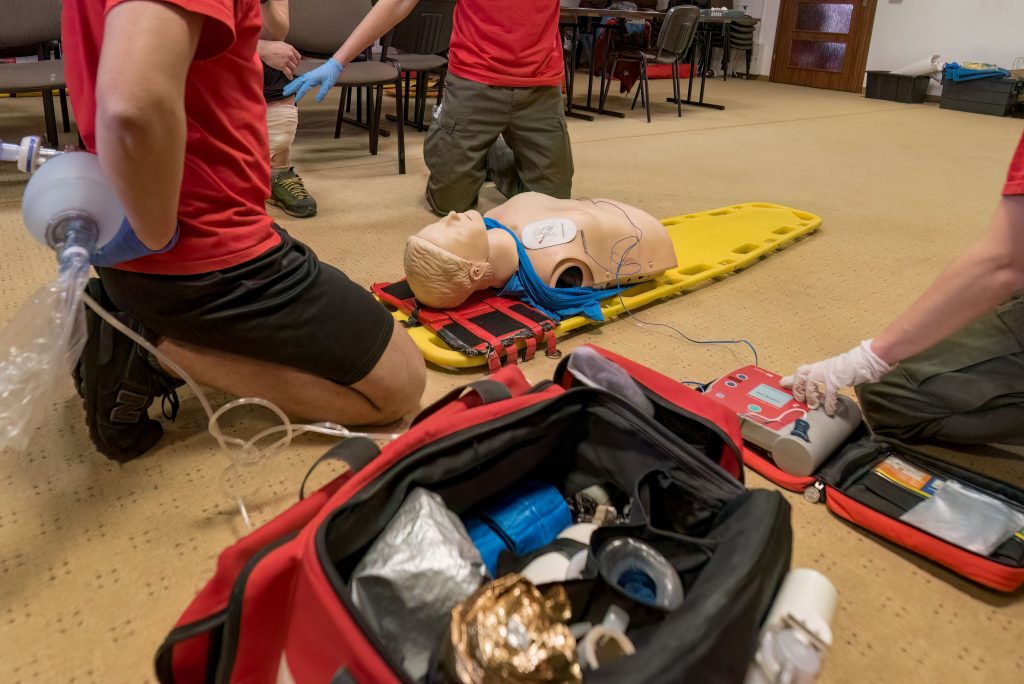
Car crashes happen suddenly, and when they do, every second counts. Knowing how to respond properly can mean the difference between life and death. One of the most critical skills you can have in a crash scenario is the ability to perform CPR (cardiopulmonary resuscitation). Whether you’re a driver, passenger, or passerby, understanding how to act when someone is injured in a car crash is essential. This guide walks you through the steps to take if you find yourself at the scene of a car accident and need to provide CPR.
Car crashes can cause severe trauma, including cardiac arrest. When the heart stops beating effectively, oxygen-rich blood no longer circulates, and brain damage or death can occur within minutes. CPR helps keep blood flowing and provides oxygen to vital organs until emergency services arrive. Immediate CPR significantly increases survival chances.
Before rushing in to help, ensure the scene is safe. Park your vehicle away from traffic, turn on hazard lights, and watch for oncoming vehicles. If the crash site is dangerous (fuel leaks, fire, unstable vehicles), do not approach unless you can do so safely. Your safety matters because an injured rescuer can’t help anyone.
The very first action after ensuring safety is to call 911 or your local emergency number. Provide details about the location, number of injured people, and the nature of their injuries. The dispatcher may guide you through emergency steps, including CPR.
Approach the injured person carefully. Check if they are responsive by gently tapping their shoulder and asking loudly, “Are you okay?” If there’s no response and they are not breathing or only gasping, it’s time to start CPR.
If you’re not trained or unsure about rescue breaths, performing continuous chest compressions alone can still be lifesaving.
If there is an automated external defibrillator (AED) nearby, use it as soon as possible. AEDs are designed for untrained bystanders and provide voice instructions. Many public places and vehicles have AEDs.
Despite these challenges, performing CPR when necessary can save a life. Training prepares you to adapt and stay calm under pressure.
CPR certification teaches you how to recognize cardiac arrest, perform chest compressions and rescue breaths properly, use an AED, and handle emergency situations safely. Importantly, certification courses include scenario-based training like providing CPR in tight spaces or on accident victims.
Being certified means you can confidently step in to help when seconds matter. It also empowers you to act effectively without hesitation, improving outcomes for victims.
Car crashes are frightening but knowing how to respond with CPR can make a critical difference. Always prioritize your safety first, call emergency services immediately, and then deliver CPR if the victim isn’t breathing. With training, you’ll be prepared to handle this high-pressure situation calmly and effectively.
If you want to be ready to help when it matters most, don’t wait. Get certified today through CPR Classes Near Me and gain the skills and confidence to save lives, whether at a car crash scene or anywhere else.
Our primary goal is to ensure that you receive a top-quality CPR/First Aid certification. With our in-person training in Austin, you can learn CPR and BLS in just one class. Your presence is all that’s needed to continue with your lesson! During your session, you will complete all the live-training components necessary to ensure you receive your AHA Healthcare Provider certification card.
Our CPR Classes in Austin are discounted to $59.95 (saving you $20), and our CPR + First Aid Class is offered at $79.95 (also saving you $20). When looking for CPR Classes, ensure to check for the American Heart Association seal. Other sites might seem cheaper but frequently lack the official training credentials demanded by employers.
Upon successful completion of the course, you will obtain a CPR certification that is valid for two years. The AHA CPR certification is recognized with the highest acceptance rate among employers nationwide.
Indeed! Enroll in any CPR Certification Austin BLS course to extend your certification for an additional two years. The in-person BLS course and the Renewal Class are identical.
Anyone capable of completing the course independently should consider pursuing CPR training and CPR Certification. There is no minimum age restriction for obtaining a CPR certification in Austin through the American Heart Association (AHA)..
CPR training needs to be carried out in person to guarantee its effectiveness. Our experienced instructors offer an engaging and dynamic learning experience. Typically, employers do not recognize CPR certifications that are obtained solely through online courses.
All authorized American Heart Association training centers are obligated to display the entire video. After a three-hour session with CPR Classes Near Me Austin, your BLS CPR eCard will be promptly issued by the instructor on the same day!